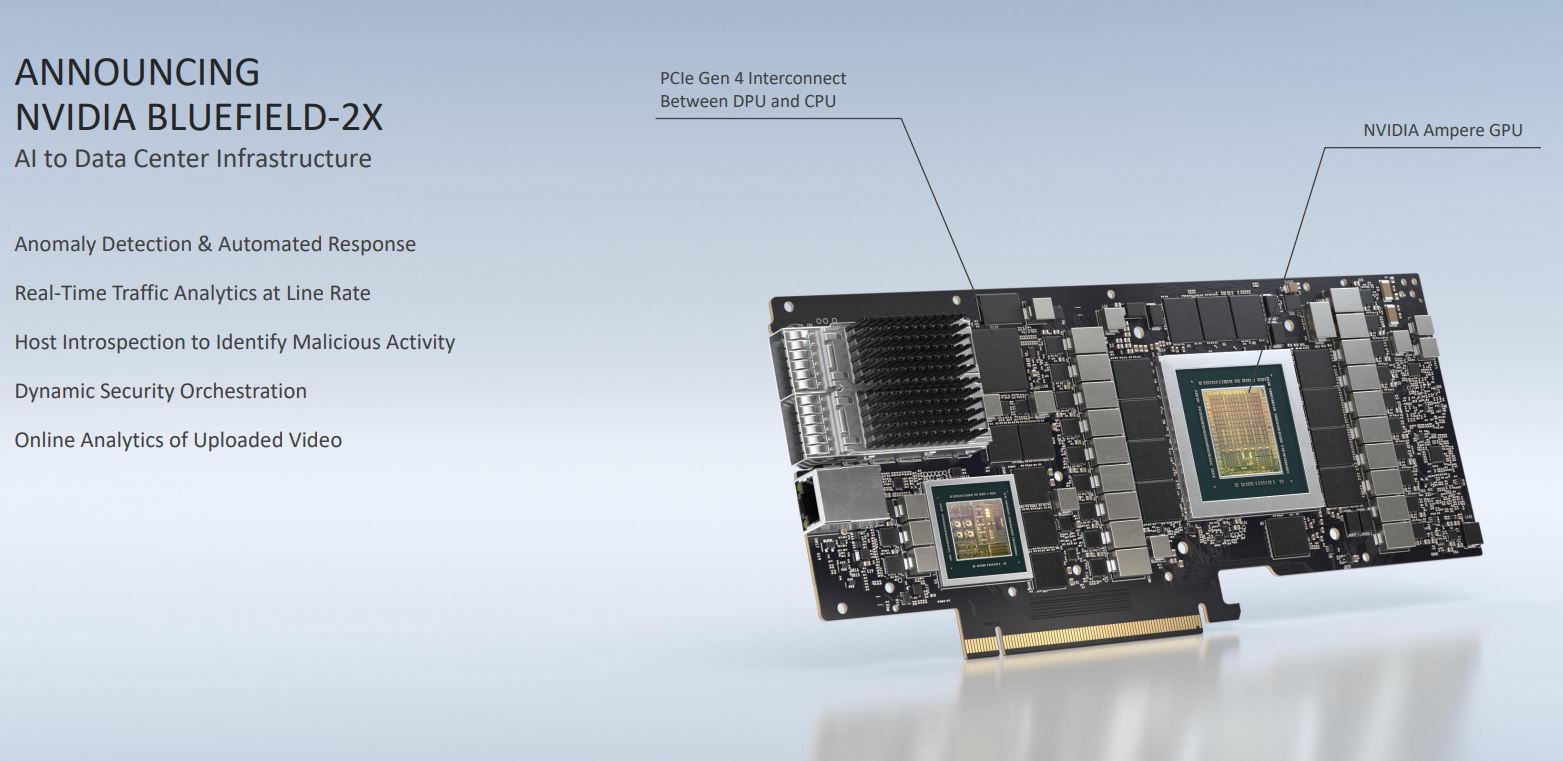A1xLLcqAgt0qc2RyMz0y
Veteran
Nvidia unveils new BlueField family of DPUs for data centers
https://seekingalpha.com/news/36198...tm_campaign=rta-stock-news&utm_content=link-3
From the article:
Any speculation on what Bluefield DPUs really are?
https://seekingalpha.com/news/36198...tm_campaign=rta-stock-news&utm_content=link-3
From the article:
During today's GPU Technology Conference, Nvidia (NASDAQ:NVDA) announces DPUs, or data processing units, a new kind of "data-center-infrastructure-on-a-chip-architecture."
The company outlined a three-year DPU roadmap, including the new BlueField-2 of DPUs and the DOCA SDK for building applications.
Nvidia says one BlueField-2 DPU can deliver the same data center services that could consume up to 125 CPU cores.
Server manufacturers including Lenovo, ASUS, and Dell plan to integrate Nvidia DPUs into their enterprise server offerings.
VMware (NYSE:VMW) is working with Nvidia as part of its recently announced Project Monterey to deeply integrate Kubernetes into the vSphere.
IBM's (NYSE:IBM) Red Hat will offer DPU support through its open hybrid cloud portfolio components Red Hat Enterprise Linux and Red Hat OpenShift.
Check Point (NASDAQ:CHKP) will integrate Bluefield-2 DPU in its cybersecurity technologies.
Any speculation on what Bluefield DPUs really are?

